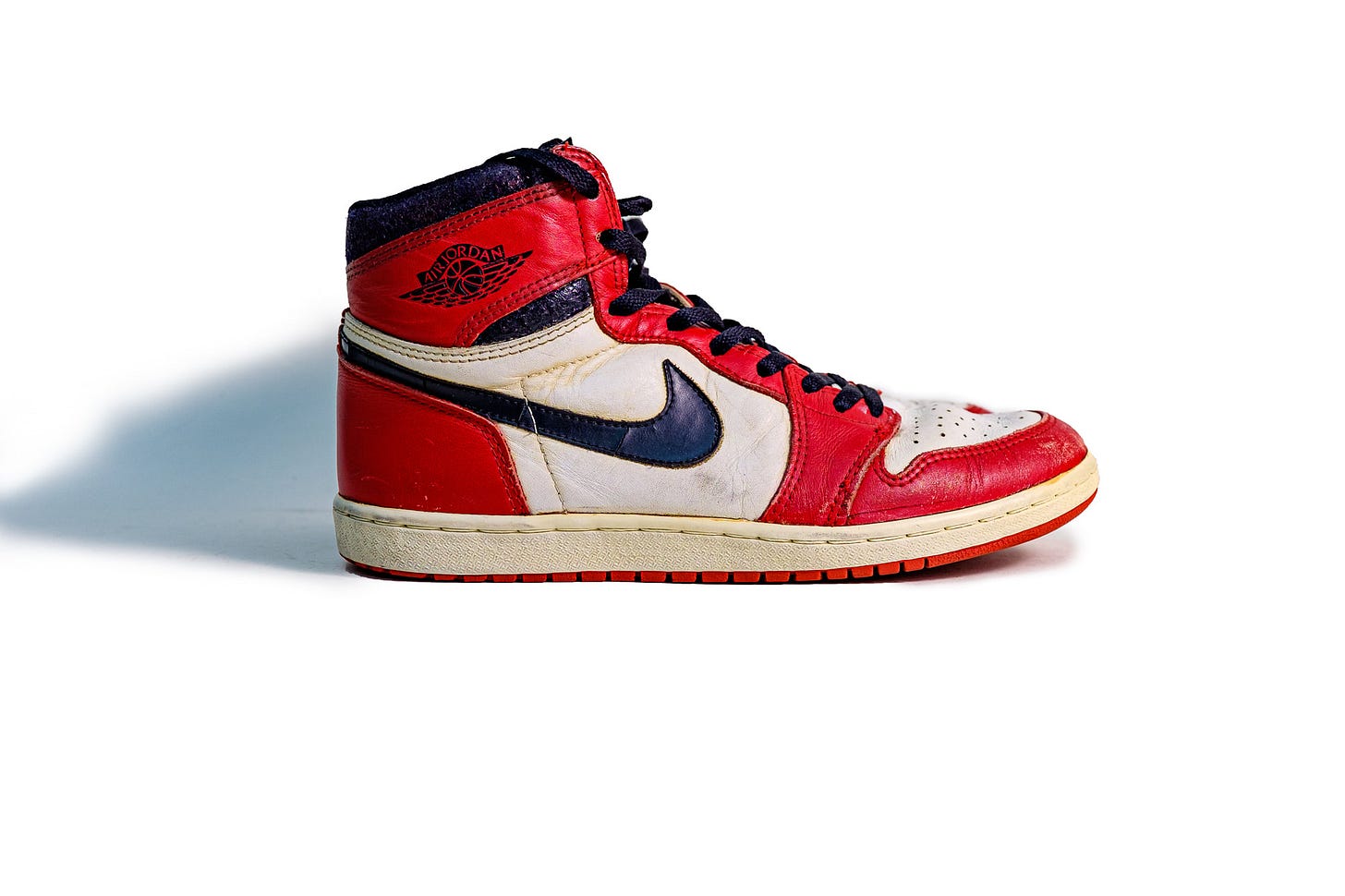The end of cultural icons: Why there will never be another Air Jordans
In chase for the iconic, we killed the icons
I write weekly newsletter about how the new forms of social, cultural, and environmental capital change brand strategy. If you enjoy this issue, please like it above, share it with anyone you think may find it useful, and subscribe below:
I·con /ˈīˌkän/: a person or thing regarded as a representative symbol or as worthy of veneration.
Welcome to the post-icon age.
The 1980s had Air Jordans and Back to The Future. 1990s had Vans Half Cab and New Balance 1500 and Britney Spears.
We have “re-editions,” “inspired by,” “brought back” and “in collaboration with.” We also have anti-icons, like Kanye West or Adam Neumann or Elon Musk, who are as known for their anti-social antics as for their creativity.
The problem is not the crisis of originality. Iconic products or ideas or personalities are always outcomes of their context. The mood has to be right for everyone to like chunky sneakers or shoulder pads. When the media, culture, or retail were mass, so were the social symbols. These days, we’d be pressed hard to find symbols that mean the same thing to everybody. The geography of influence, taste, and communities shifted to micro. The big, sweeping planes of culture that asked for big, sweeping products and personalities are replaced with many micro cultures, each with their own niche products and personalities. Our concepts of “cool” and “iconic” are forged in the intimacy of our own taste communities.
At the same time, the taste space has never been flatter. Burning Man outfits, family pajama sets, Halloween costumes, weddings, craft breweries and coffee shops all appeal to our tendency to revert to the recognizable and the familiar. Just like crickets or lightbulbs, only amplified with Instagram likes, Twitter hashtags and other performance metrics, our taste signals are harmonized, so all of us end up looking the same, dressing the same, liking the same things, and visiting the same places that also start to look alike.
Here are the five forces that ushered us into the post-iconic future:
Keep reading with a 7-day free trial
Subscribe to The Sociology of Business to keep reading this post and get 7 days of free access to the full post archives.




